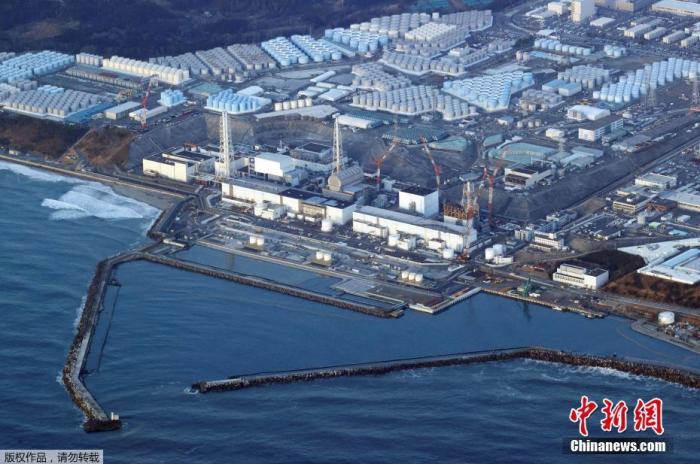China News Service, July 18. According to Kyodo News, Tokyo Electric Power Company has basically completed the seabed excavation of the nuclear sewage "discharge port" near the 1 km offshore where the nuclear sewage from the Fukushima Daiichi nuclear power plant in Japan is discharged to the sea.
In the future, TEPCO plans to place a box-shaped structure at the excavation site and connect it to the end point of the submarine tunnel excavated near the nuclear power plant harbor.
Data map: Fukushima Daiichi Nuclear Power Plant.
According to the report, according to Tepco, the outlet is made of reinforced concrete, 12 meters long, 9 meters wide and about 10 meters high.
Crafted outside the nuclear power plant.
After the official construction of the equipment begins, it will be transported to the offshore area by ship, sunk into the seabed excavation, and fixed with concrete around it.
TEPCO started excavation in May at a depth of about 12 meters and 1 km offshore of the nuclear power plant. By the end of June, it had excavated a bowl-shaped space of about 40 meters square.
The finishing touches of laying down stones to stabilize the surface are also coming to an end.
According to reports, the Japanese government and Tohoku Electric Power Co., Ltd. are vying to start discharging nuclear sewage around the spring of 2023, and also said that the related equipment will be completed by mid-April of the same year.
The construction of the submarine tunnel and the placement of the discharge outlet will start after obtaining the approval of the Atomic Energy Regulatory Commission and local consent, but TEPCO believes that the submarine excavation is an "environmental construction" that does not require approval, and has already taken the lead.
The report pointed out that Japan's Atomic Energy Regulatory Commission is expected to formally approve Tepco's sea discharge plan as soon as this month.
On April 13, 2021, the Japanese government decided to filter and dilute a large amount of nuclear sewage from Fukushima and discharge it into the sea.
The move was strongly opposed by the Fukushima Prefecture Fisheries Association and the National Federation of Fisheries Associations of Japan, as well as the international community.

